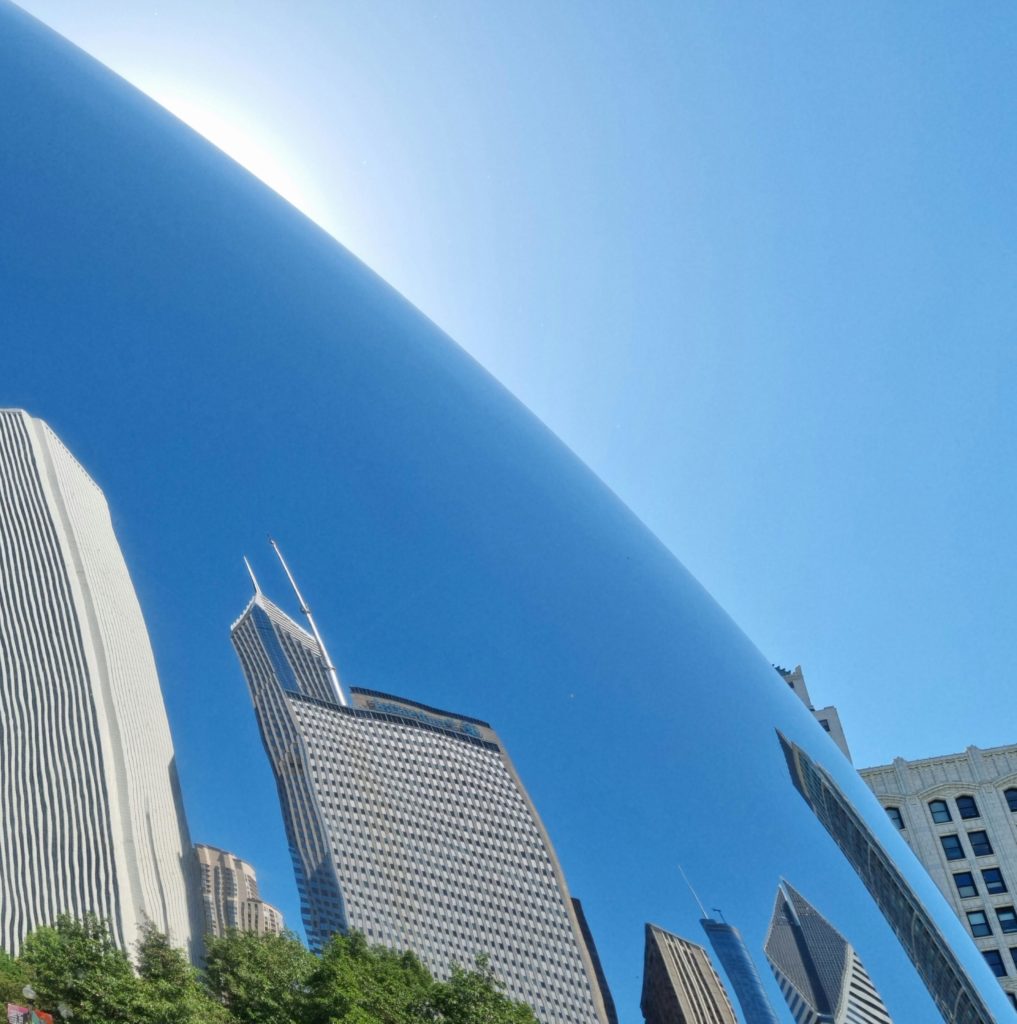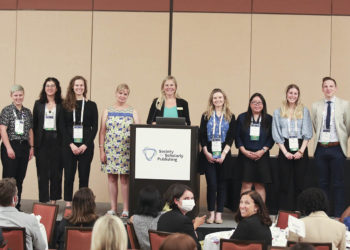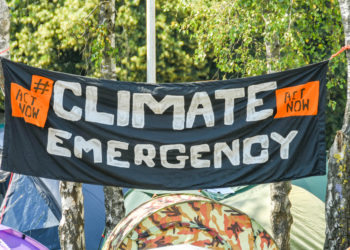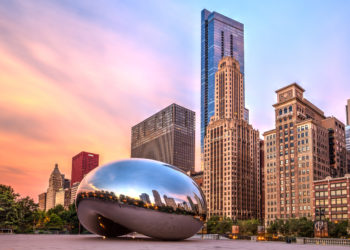“Hey, how have you been?”
“Yeah, it’s been” (gestures)
“Yeah.”
A typical conversation from my first in person conference since I said goodbye to Todd and Alice and Jill and the rest of the NISO crew as well as other good friends who were at the event in Baltimore in February 2020. A few days later and Todd was writing to us all saying that someone had contracted COVID and also attended the event… and as history will no doubt put it; a few weeks later, we all went home.
And there I stayed pretty much. I next got on a plane in April 2022 – a holiday (After staying at Casa del Smith for two years we went somewhere spectacular – Mauritius) and then in May (just before the 44th SSP Annual Meeting) the first business trip – to India to see how all our friends and partners had fared, and meet, and hug, and take a moment to share the memories of those who didn’t make it. To hear the stories. To stare utterly gobsmacked at pictures of empty Mumbai streets. To share smiles and waves from fellow humans who are glad to see you, because you represent the turning perhaps; the reaching of the other side of the Rubicon, and whatever awaits on its banks and the land beyond.
So I find myself thinking more about the things surrounding the 44th Annual Meeting, than within it. Trying to put it all into the wider context of my recent experiences. It was great to see faces in the real. To discover the sudden ponytail! To hear lockdown stories and other matters of a life changing nature. The meeting was great. Kudos to everyone who worked so hard to put the program together. You can read up on some attendee perspectives in this blog post, or this blog post, or this blog post, or this blog post. But what I keep coming back to, rather than the detail of the sessions (though seriously, it’s bureaucracy we seem to be having to solve for these days? Not the building of awesome information tools on top of all this wonderful open access content?) is the experience of coming back from Africa and Asia through the UK and then to the USA, and what I saw.

In Mauritius, the locals were very very happy indeed to see us. Its lifeblood is tourism. And that tourism arrives by plane. And Mauritius is on the frontline of climate change – the island is protected from the ferocious southern Indian Ocean by a reef, and the cyclones seem to be following their Atlantic relatives in terms of frequency and ferocity. Yet, they need the planes.
In India, I saw a city (Bangalore) that had seemingly shaken off the pandemic and was back to the riotous chaos of the before-times. Insane TukTuk drivers, air you can taste, and (oddly) microbreweries and New Indian Cuisine places everywhere. The Indian hotel response to the lack of international visitors seems to have been to turn their lobbies into a variety of destinations for the locals to come to. And indeed they did. And it was loud.
I also saw another city that seems to have changed, Mumbai, where the traffic has NOT returned to pre-pandemic levels. And the air is cleaner. And there are many electric buses (and a few cars as well) on the streets. Will it last? Maybe, our return visit in November will bring further data. Oh, one other thing – the cash economy – seems to have gone. All the street traders can sell you food, trinkets, you name it, by mobile phone. QR code and go. The Indian government gets some tax revenue, and Google gets its cut of course.
And so to America. First sign that things might be different – I was through Immigration at O’Hare in 7 minutes. No that’s not a typo. 20 years I’ve been flying in, every summer. I have NEVER cleared immigration at O’Hare in 7 minutes, not even close. Clearly a portent. The traffic was bad – but downtown Chicago seemed quieter to me. And taking a stroll up Michigan Avenue came the next sign that things had changed. ‘Retail Opportunity’ after ‘Retail Opportunity’ on one of the most iconic retail streets in the world, let alone the US. So the death of the UK high Street seems to be infectious.
And as I wandered past every empty temple to consumerism, in architecturally wonderful buildings, I wondered ‘what happens now?’ The iconic (that word again) Tribune Tower building is being turned into luxury apartments (The Newspaper left the building in 2018). An information business that once had the heft to build a landmark temple to knowledge, converted to residential. But what then? Why live there? To go to the office? Everyone’s gone home. Mostly.
And then the Annual Meeting. And yes it was good to meet up with folk in person. It really was. A reminder that the qualia of a Teams/Zoom/Meet/WebEx (if you must) meeting is not the same as being in the real. But then of course we know each other right? Old friends. Over there in the monitor, I hear folks who are underrepresented, speak about how actually those imperfect replicas of a physical space have been an improvement in many ways. Women more easily able to speak up – apparently not being talked over or interrupted as much as the before-times, more able to advance their arguments and points of view. Is it true? Is it anecdote? I don’t know, but it feels important – in racing back to the real, are we leaving behind improvements for others not so comfortable or accepted? Here’s a quote from someone I follow on Twitter: “Virtual conference spaces are more acceptable, especially for people who are disabled and trans. Cis het white guy… Isn’t something lost when you shift to hybrid conferences?” There are many experiences and positions here, and validity to most of them (though, y’know). Being heard and being seen, is important regardless of the medium.
But this, and the walk up Michigan, got me thinking about the space. About the experience, and the cost and the consequences. Fact is, an international meeting, is not cheap. It’s not cheap to put on. And it’s not cheap to attend either. Sponsors, Attendees, Organizers and Organizations are all investing time and money to make it happen. There’s another expenditure as well. The CO2e footprint.
I flew to Chicago to speak about the work my organization (The IET) is doing to achieve our goal of being Net Zero by 2030. Yes, the irony (only actually no – I’ll write about this shortly [I promise, Ed]). Anyway, having gone through the exercise of trying to arrive at an actual number for how much CO2 is emitted by the IT department at The IET, I wondered what the approximate footprint on the 44th Annual Meeting was.
The answer I arrived at, is 308.5 tCO2e (That’s metric tonnes – I’m using the European notation here) The hotel space is roughly 27tCO2e for the duration of the event. The rest is the commute so to speak. Flights from the east and west coast, and all of us who flew across the Atlantic to be here. By the way – a special shout out to one attendee who managed to come by train rather than plane. But for most, air was the only viable route. My bit of this footprint was 4 times that of someone coming from the east coast more or less. But the average for each physical attendee? 487Kg of CO2e
Meeting up in the real is not without its cost. And we MUST bring that cost down. It’s not optional.
Which brings me back to spaces. Chris Herd, the CEO of a company called FirstbaseHQ, a company that enables remote working, has had quite the pandemic. Go find him on Twitter, he’s worth following. His view (and yes, clearly it’s biased) is that what happens now, is that we basically do NOT go back to the office in anything like the way we did before. Other opinions are available of course, but I think he’s more right than not. And that has consequences. What happens to the wonderful buildings of downtown Chicago if their utility as office space is coming to an end? It’s not easy to convert to residential – and even if you did, does a purely residential downtown work? What happens next?
He believes that with the rise of working from home, there will be a need to have events where the workforce meets up for the qualia of the physical experience, and that those events will not happen at a Holiday Inn just outside Heathrow (or even a Sheraton in downtown Chicago), but in places and spaces that offer something different. Something more valuable. And it is THIS, that I’m thinking about a lot. If an International meet up is going to cost circa 500 tCO2e per 1000 attendees, then how can we bring that down, but also how can we make sure that the value of that burning is truly worth it. This feels to me like an opportunity. Do/should organizations think of events such as the annual meeting as part of the reconnection of the remote to the physical? How do we maximize the efficiency and the utility of an international meeting?
Over here, a digital media operation called Tortoise (Investigative journalism by membership subscription) is doing an experiment. They are holding a festival. An actual ‘in a field in England’ festival. With tents. And no doubt various classes of portable sanitation. There are keynotes, and discussion sessions, and food, and music and other stuff to do. This feels genuinely innovative to me. Bringing people together and turning a conference into a celebration, an emotional reconnection, and the opportunity to reaffirm values and a shared aesthetic. And maybe to experience some different things as well.
Sounds lot like the emotions that were being aired many times during the Annual Meeting. What might the SSP Annual Meeting (or the ALPSP, or UKSG, or STM meetings, and would that mean Frankfurt is Glastonbury in this metaphor?) look like reimagined as a different space? Might this be the way to better enable a hybrid experience? Might they actually occur locally – distributed across nations, to minimize the footprint to get there?
It was good to be back. What happens now, I do not know. But I don’t think we can go back to the way things were before. The world has changed. Time to cast off some comfortable old clothes, and go seize the opportunity that this horrific disease has given us.
Discussion
2 Thoughts on "It’s Good to be Back… But What Happens Now?"
The annual Night of Ideas (https://nightofideas.org/) is a great event that is simultaneously held in a number of physical locations as well as virtually. How the Light Gets In was another, but it looks like there is only one physical location in 2022:
Hi – thanks for the thoughtful overview and the connection to Chris Herd. Crossref posted about its plans around travel and meetings (https://www.crossref.org/blog/rethinking-staff-travel-meetings-and-events/). We will be travelling less – that’s one clear solution. But as you note there’s a lot more – how do we make in person meetings as effective as possible, how do we make distributed (I don’t like the term “remote” as it implies the default is an office – also, we aren’t remote from our homes) work as effective as possible? Crossref recently hired staff in Indonesia and Kenya as well as the UK and USA – and we have staff in about 8 countries – a challenge for a small organization but it also has big benefits. I look forward to more discussion about this.


